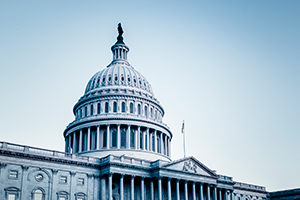EEOC Finalizes Guidance on Workplace Harassment
 On April 29, the U.S. Equal Employment Opportunity Commission issued final guidance on workplace harassment and discrimination titled “Enforcement Guidance on Harassment in the Workplace.” The guidance clarifies existing employer obligations to address workplace discrimination and aims to assist employers in recognizing, managing and preventing in-person and online workplace harassment.
On April 29, the U.S. Equal Employment Opportunity Commission issued final guidance on workplace harassment and discrimination titled “Enforcement Guidance on Harassment in the Workplace.” The guidance clarifies existing employer obligations to address workplace discrimination and aims to assist employers in recognizing, managing and preventing in-person and online workplace harassment.
Background
The EEOC administers and enforces Equal Employment Opportunity law to protect workers against workplace discrimination. As such, the EEOC issues guidance to help employers and employees understand their obligations and rights under EEO law to a workplace free from discrimination. In October 2023, the EEOC issued its proposed guidance on harassment in the workplace, in which they provided an overview and examples of situations that would constitute workplace harassment. The EEOC received over 38,000 comments from the public in response to the proposed guidance, which they analyzed to develop the final guidance summarized below.
Summary of Final Guidance
The EEOC’s final guidance aligns with and expands upon the proposed guidance and revises previous EEOC workplace harassment and discrimination guidance to address significant legal developments in recent years. Specifically, the guidance includes new overviews of workplace protections against harassment based on sexual orientation and gender identity, which the 2020 Supreme Court Bostock v. Clayton County ruling established as precedent. The guidance also addresses pregnancy, childbirth and related medical conditions as protected characteristics under the scope of “sex.” Though pregnancy has previously been protected against workplace harassment under laws like the Pregnancy Discrimination Act, recent laws like the Pregnant Workers Fairness Act and its implementing regulations have strengthened the protections afforded to pregnant workers, necessitating the need for the EEOC to update its guidance.
In addition to the expanded scope of sex, the EEOC also includes new guidance on potential challenges relating to social media and the workplace. This includes conduct occurring in a non-work-related virtual setting (such as social media platforms or private messaging systems on personal computers or phones) that could impact the workplace. In the guidance, the EEOC provides scenarios in which certain messages shared via private messages on phones or posts shared on social media platforms about employees could create hostile work environments, triggering the requirement for employers to correct the situation.
In total, the guidance provides 77 examples to explain harassment and discrimination in the workplace, hostile work environments, employer liability and obligations to correct workplace harassment and discrimination, and systemic harassment. As the EEOC noted in the proposed rule, the guidance and its examples “do not have the force and effect of law and are not meant to bind the public in any way.” Instead, the guidance is “intended only to provide clarity to the public regarding existing requirements under the law or agency policies.”
In addition to the guidance, the EEOC also published educational materials for employers and employees seeking direction and support on harassment prevention strategies, including a summary of key provisions, an FAQ for employees, and a fact sheet for small businesses.
CUPA-HR will keep members apprised of further EEOC guidance on discrimination and harassment in the workplace.


